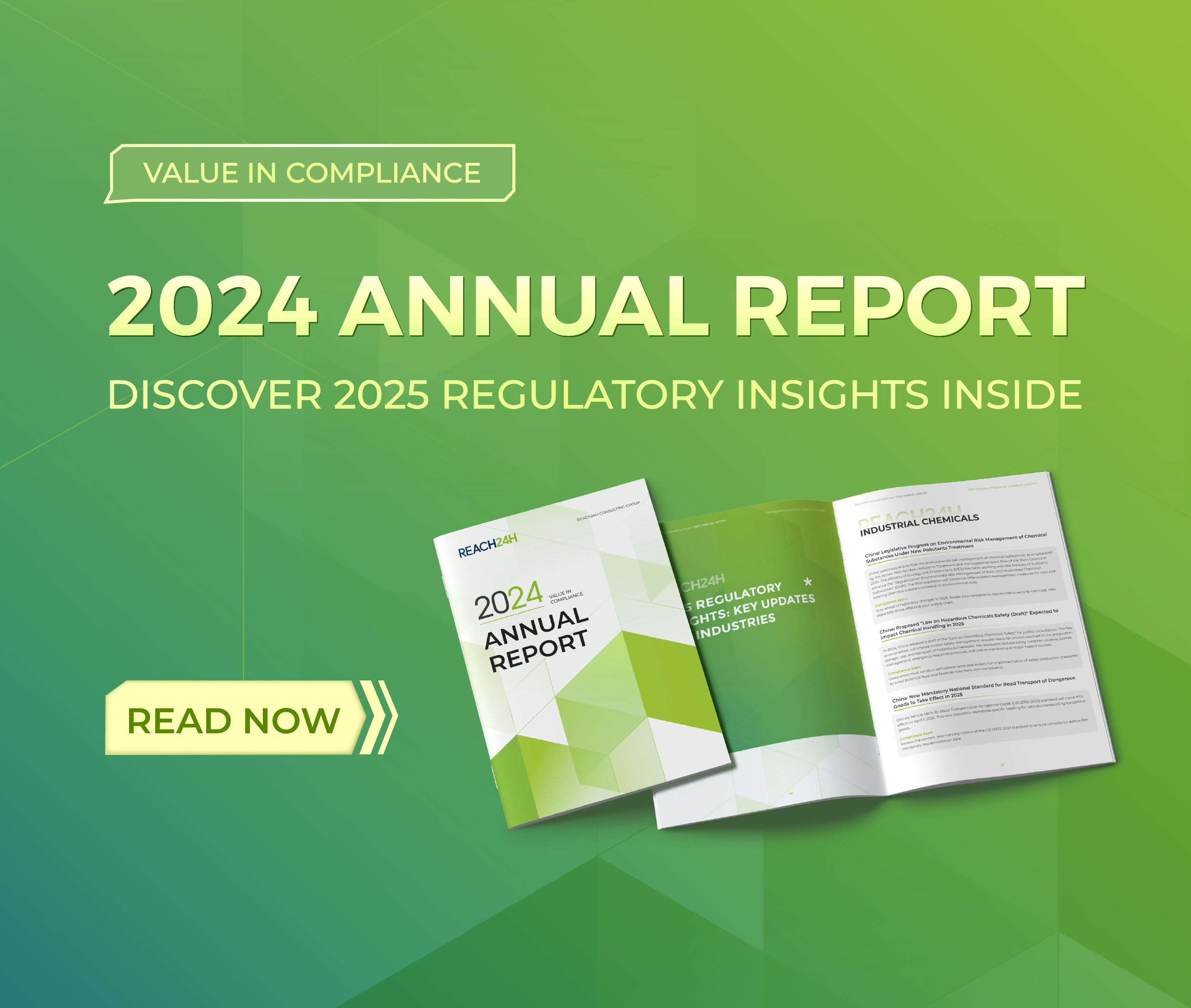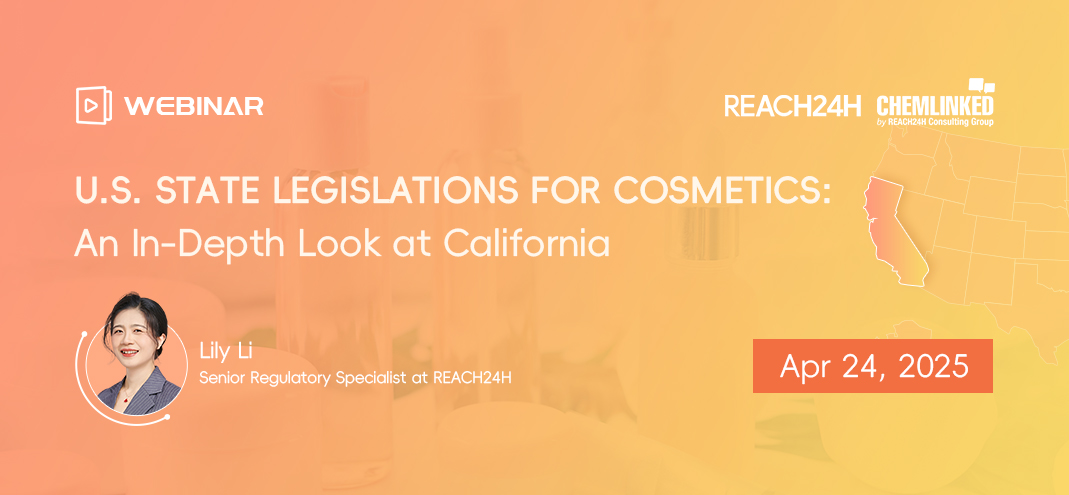The Notifications of In Situ Generated Active Substances should be Submitted by 27 April 2016
Abstract: the notifications of in situ generated active substances below should be submitted by 27 April 2016. Otherwise, the relevant enterprises will have to stop trading or using the combination until it is approved several years later. The companies should evaluate their products actively and design a strategy in order to reduce the compliance cost and impact on the trade to the minimum.
It has been more than 2 years since Biocidal Products Regulation (BPR, Regulation (EU) 528/2012) applied from 1 September 2013. After the deadline of compliance of Article 95(2) for biocidal products on 1 September 2015, the notifications of in situ generated active substances[1] below should be submitted by 27 April 2016.
European Chemical Agency (ECHA) issued a clarifying note named “in situ active substance/precursor-combination open for notification” (please refer to table 1) in January 2016. Authority requires those whom are producing or sell listed product combinations to submit a notification by 27 April 2016. If the notification is accepted, the enterprises shall have two years to submit a full application for active substance approval. In the meantime, the product can remain on the market until a decision on approval is made by authority. In this way, the trading normally will not be interrupted. If the active substance and precursor combination is listed in the following table, but nobody notifies in time, the relevant enterprises will have to stop trading or using the combination until it is approved with a completely new application. Moreover, it may take several years to get the approval.
On the other hand, the notifications may also need to be submitted for the active substance as originally defined before the redefinition (i.e. not in situ generated). For example, sulphur dioxide is now re-defined as “sulphur dioxide generated from sulphur by combustion”. This means that sulphur dioxide no longer supported as an active substance on its own. However, sulphur dioxide is also supplied and used on its own as an active substance without being generated in situ. To take over the participant’s role for sulphur dioxide as an active substance, a notification has to be submitted by 27 April 2016.
There is only 2 months away from 27 April 2016. The companies should evaluate their products actively and design a strategy in order to reduce the compliance cost and impact on the trade to the minimum.
Table 1 in situ active substance/precursor-combination open for notification
|
No. |
Former identity in the Review Programme |
Redefined identity (in situ active substance generated from precursor) |
Product Types (open for notification) |
|
1 |
[939] Active Chlorine: manufactured by the reaction of hypochlorous acid and sodium hypochlorite produced in situ |
Active chlorine generated from sodium chloride by electrolysis |
2,3,4,5,11,12 |
|
2 |
[424] Sodium bromide |
Active bromine generated from sodium bromide and sodium hypochlorite |
2,3,4,5,11,12 |
|
Active bromine generated from sodium bromide and calcium hypochlorite |
|||
|
Active bromine generated from sodium bromide and chlorine |
|||
|
Active bromine generated from sodium bromide by electrolysis |
|||
|
3 |
[529] Bromine chloride |
Active bromine generated from bromine chloride |
11 |
|
4 |
[458] Ammonium sulphate |
Monochloramine generated from ammonium sulphate and a chlorine source |
11,12 |
|
5 |
[515] Ammonium bromide |
Bromide activated chloramine (BAC) generated from precursors ammonium bromide and sodium hypochlorite |
11,12 |
|
6 |
[491] Chlorine dioxide |
Chlorine dioxide generated from sodium chlorite by electrolysis |
2,3,4,5,11,12 |
|
Chlorine dioxide generated from sodium chlorite by acidification |
|||
|
Chlorine dioxide generated from sodium chlorite by oxidation |
|||
|
Chlorine dioxide generated from sodium chlorate and hydrogen peroxide in the presence of a strong acid |
|||
|
7 |
[792] Tetrachlorodecaoxide complex (TCDO) |
Chlorine dioxide generated from Tetrachlorodecaoxide complex (TCDO) by acidification |
1,2,4 |
|
8 |
[439] Hydrogen peroxide |
n/a: only the water solution is supported in the review programme |
1,2,3,4,5,6,11,12 |
|
9 |
[70] Peracetic acid |
Peracetic acid generated from tetraacetylethylenediamine (TAED) and sodium percarbonate |
1,2,3,4,5,6,11,12 |
|
10 |
[37] Formic acid |
Performic acid generated from formic acid and hydrogen peroxide |
2,3,4,5,6,11,12 |
|
11 |
[136] Glutarol (Glutaraldehyde) |
n/a: Glutarol (Glutaraldehyde) is supported itself as an active substance |
1,2,3,4,6,11,12 |
|
12 |
[179] Carbon dioxide |
Carbon dioxide generated from propane, butane or a mixture of both by combustion |
19 |
|
13 |
[405] Sulphur dioxide |
Sulphur dioxide generated from sulphur by combustion |
4 |
|
14 |
[693] Pentapotassium bis(peroxymonosulphate)bis (sulphate) (KPMS) |
n/a: KPMS is supported itself as an active substance in the review programme |
|
|
15 |
[813] Peroxyoctanoic acid |
Peroxyoctanoic acid generated from octanoic acid and hydrogen peroxide |
2,3,4 |
|
16 |
[453] Disodium peroxodisuplhate/ sodium persulphate |
n/a: Disodium peroxodisuplhate/ sodium persulphate is supported itself as an active substance in the review programme |
4 |
|
17 |
Other active substances supported in the Review Programme if also generated in situ from precursor system(s) |
|
Reach 24H has rich experience in deal with EU BPR/USA EPA and can make custom-made compliance service for enterprises. If you have further questions, please consult 0571-8700 6630.
What is the ‘in situ generated’ Biocidal active substances?
‘In situ generated’ Biocidal active substances are generated from one or more substances (called ‘precursors’) at the place of use. For example, active chlorine, which is used as a disinfectant of water or a cleaning product, can be generated by electrolysis from either sodium chloride or from potassium chloride.


